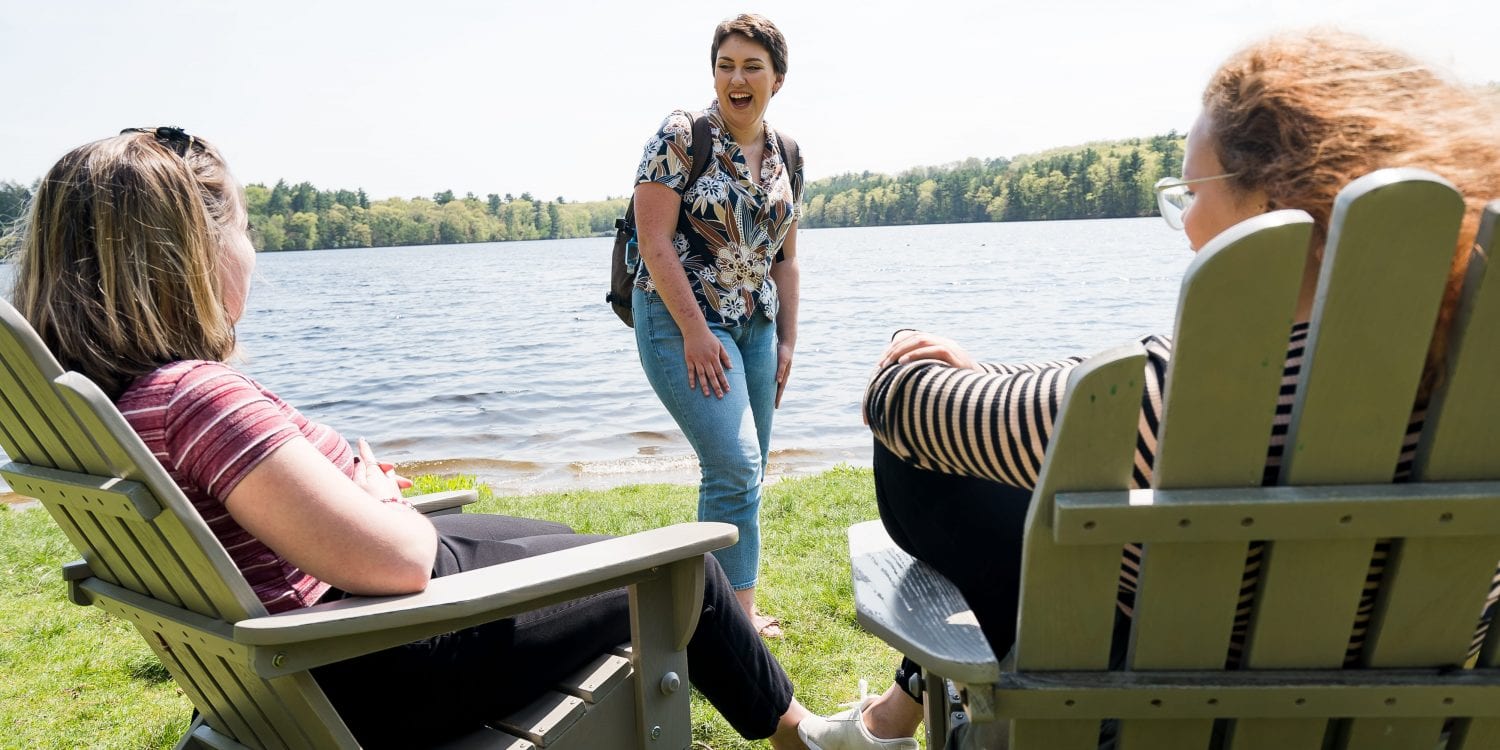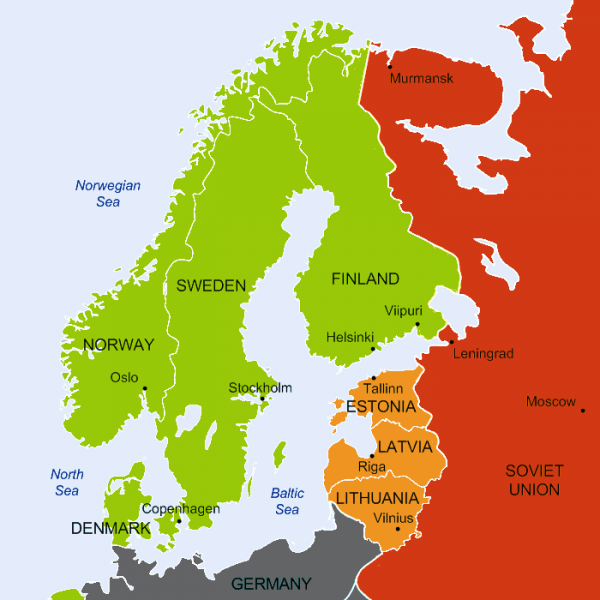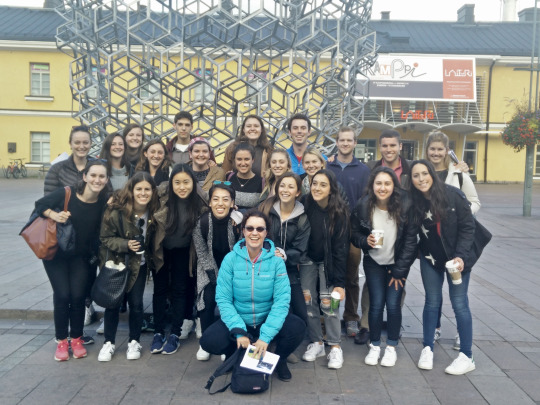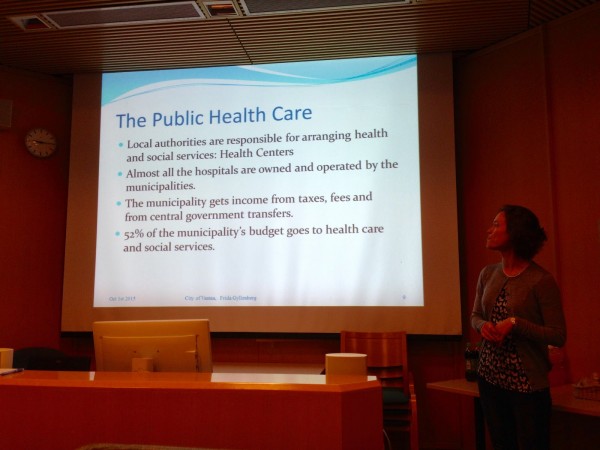Once a month, we have a week-long “travel break” here at DIS. We could use these weeks to travel alone, but for one of the travel weeks our core classes schedule a week long trip to other European countries so that we can extend our education not just outside of the classroom, but outside of Denmark as well.
I am in the Public Health core class – a major that isn’t offered at Wellesley, unless you design your own program. I’ve really enjoyed having very focused studies on healthcare delivery and policies, and not explicitly looking at everything through a gender or race perspective. I’ve realized that I end up doing that anyway, because my Wellesley education has kind of rewired me to think in certain terms and through certain lenses that I may not have been aware of before. Last week, my public health class of 22 students travelled with our instructors to Riga, Latvia and Helsinki, Finland.
(I didn’t know where Latvia was until I looked it up before my study tour..)
Walking through the old town of Riga, our tour guide explained how many of the buildings are from different time periods; ranging from medieval architecture to art nouveau. This mixture of styles and cultures resulted from the country’s newly gained independence and its desire to establish a national identity out of a history of occupation. We saw this same process not just in the architecture of Latvia but also in its healthcare system. Representatives from all of the institutions we visited spoke extensively about the challenges they have faced as small underfunded and understaffed organizations trying to combat the many gaps left by the Latvian government, like high infant mortality and high HIV/AIDS infection rates.
After being in Riga for three days and seeing the many needs that weren’t met, when we arrived in Helsinki and saw their all-inclusive health care, it seemed like Finland had the public health system that all countries should strive for. From the exteriors of the buildings to the large lobbies with grand pianos, we were overwhelmed by the accessibility, cleanliness, and modernity of the facilities we visited. However, after all our academic visits we came to realize that even with the objective of sustaining a community of equality, there was still room for exclusivity and the privileged to get more care.
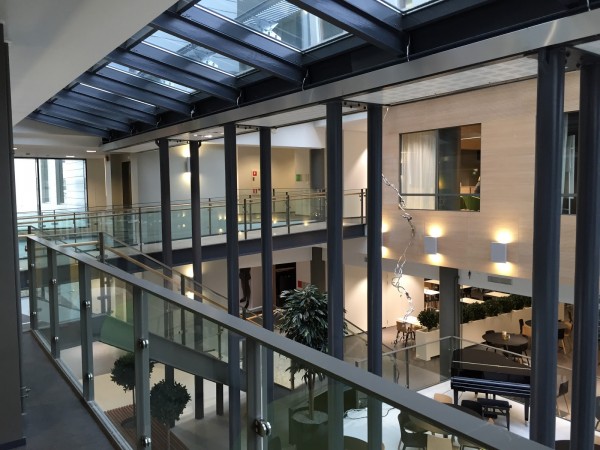
One of the most impressive insights I gained was that Finland has the world’s lowest infant mortality rate. This has been achieved largely due to an initiative started in the 1930’s, wherein mothers who get adequate prenatal care (i.e. go to maternal care check ups at clinics) receive “baby boxes” containing diapers, soaps, information pamphlets, and condoms. Distributing these baby boxes is a way of insuring that even the ‘most vulnerable’ families are able to provide basic necessities for their newborns. Of course, though, those with the financial privilege of being able to buy name-brand baby clothes and an expensive crib will most likely do so.
Check out our class tumblr page to read more about what we’ve been doing this semester!
After an intense week of studying healthcare systems and country hopping, I came home to my beautiful host family in outer Copenhagen. On Sunday, my host dad, being the great guy that he is, invited me and my friend Grace out for drinks and a football match. I only watch football/soccer when the World Cup is happening but I really enjoyed watching a local game with two of my favorite people in this country!
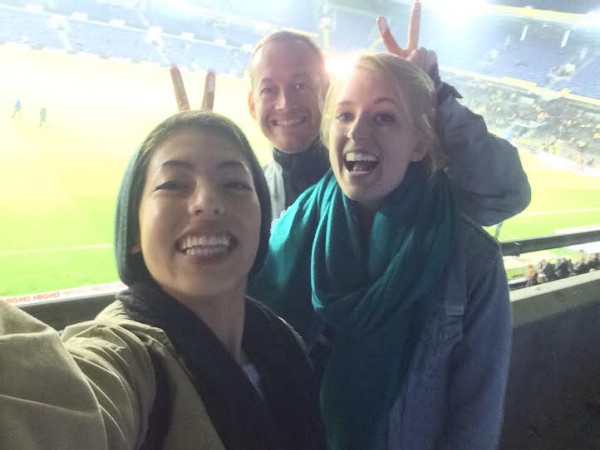
I can’t believe I’ve already been here for almost two months. That means I only have another two months left this semester in this beautiful country. I have a busy few weeks coming up as well – I head to Budapest, Vienna and Prague in a couple weeks for my next travel break! ’til then, it’s midterm time in Copenhagen. Time for me to get back to doing work at this café with coffee that’s a bit out of my price range but a perfect set up (I think most of my money here goes to beers, plane tickets, and good coffee.)
